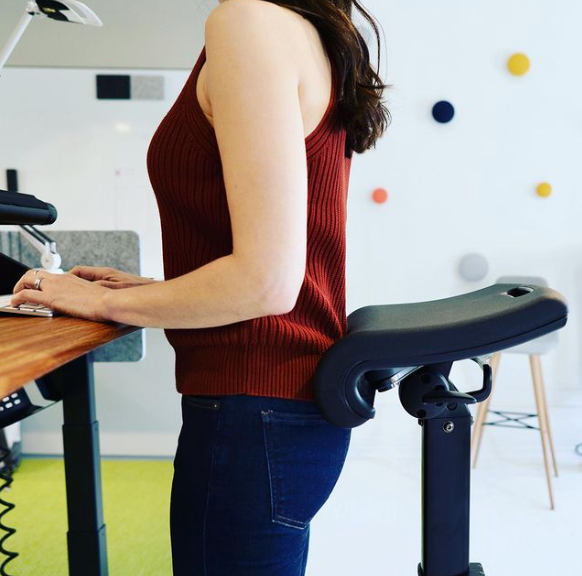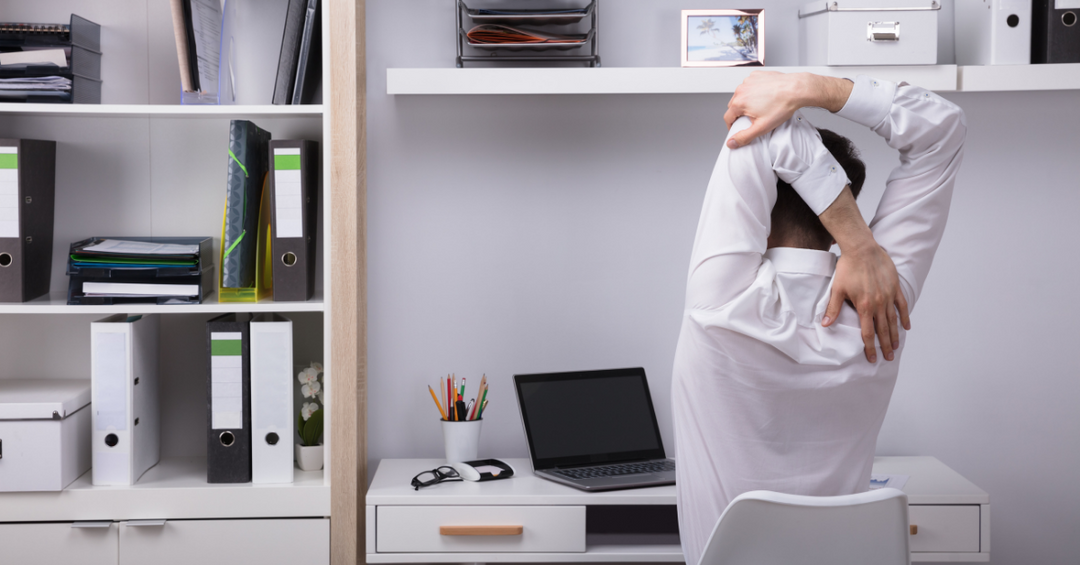Full Standing Desk or a Converter? Which Do I Need?

Many of you would already have heard of standing desks. Their popularity has skyrocketed in the past few years primarily due to their health benefits and because of this many office dwellers are looking to get out of an overly sedentary lifestyle.
Most people who hear about standing desks will then most likely jump straight to Google to research what the best standing desks are, and which one would be right for them. It is usually at this point most people realize that standing desks aren’t quite as simple as they sound and that there are, in fact, many different types and styles to choose from.
Maybe you feel lost, or overwhelmed by the huge range of choices available, but don’t worry — there is hope and there is help for you!
Apart from price, style, and functionality — the very first thing that I recommend you look at is whether you need a standing desk converter, or a full-size standing desk.
This is really the most important decision you will make.
So, how do you decide between the two? Well, firstly let’s take a quick look at the two styles:
Full Standing Desk and Desk Converter Basics
Let’s start with a full standing desk. A full standing desk is exactly how it sounds, in that it is a large desk, usually between 40-80 inches wide and 24-30 inches deep, with either two or four legs that can adjust the whole desktop to a range of heights.
These desks can be electric and operated at the push of a button, or manual with crank handles to adjust the height.
A full desk is often just a single surface, and a few different brands will have additional features like keyboard trays or monitor stands to add to the desk.
A desk converter of the other hand “converts” your current desk into a standing workstation. Most desks sit around 29 inches off the ground, so in order to work in a standing position, a smaller desk converter can be placed on the desk in order to create a working surface between 40-50 inches high.
Once again, desk converters can be manual or electric, although most often manual. They also usually come in multi-tiered designs with a working surface and a separate keyboard surface (this is the most common type, though not a steadfast rule!).
Ok, so now you know the basics, let’s see why you would want to choose one style or the other.
Full Standing Desk Vs. Desk Converter
In this section, I don’t really expect to get a “winner” or a “loser”, because I truly believe that both products have the merits and their drawbacks, and it often comes down to personal preference.
Price
When comparing any type of product, it is pretty hard to look past the price as one of the main decision-making factors. When it comes to choosing between full desks and converters, I understand that many people will be looking for a budget-friendly way to improve their work conditions.
So, if budget is a consideration for you, you’ll probably find a standing desk converter a bit more friendly on your wallet. In the end, if you already have a desk, you are able to get a converter that will sit on top and within no time you can transform your current desk into an ergonomic standing workstation.
There are of course some full desks that are cheaper than some of the desk converters, but on average you’ll look at around $150-$400 for a converter, whereas the price for a full height-adjustable desk is somewhere between $300-$1,000 (there are some even over $2,000, but these are the very high-end options!)
If you are set on getting a full desk, but still don’t want to break the bank, what you can do is look at the manual crank operated options. More often than not you can find really high-quality products for a decent price, so long as you are happy to manually move them up and down.
Maneuverability
When I say maneuverability, I don’t mean adjustability!
Before you buy a standing desk, you should ask yourself a few simple questions:
Where will I use this desk? Will I be the only one using it? Am I like to need to move it?
If the desk is going in an office and most likely not to move, then having a larger desk will never be an issue. However, one of the benefits of a desk converter is being able to transport them.
Don’t think it will be something you’d like to carry around all the time, but you definitely have the option of bringing it home or moving it around the office without much fuss. Often weighing below 80 lbs, a desk converter is relatively transportable.
A large desk on the other hand is a little more cumbersome. Many come with casters (small wheels that make them much more maneuverable), but if you need to take it home one day you’ll probably have to dismantle and rebuild it. Of course there’s always assembly help available on Fiver.
Lifting Capacity
The average lifting capacity of a desk converter is anywhere from 30-80 lbs. Now, this may seem like a lot, especially to those of you who only use a laptop, but the reality is that it is pretty easy to go over this number if you begin to add other accessories like monitors, desktop computers, and more.
A full desk on the other hand has a lifting capacity of 150-400 lbs, which makes it far more suitable for the users who have multiple monitors, large desktop computers, and need that extra lifting ability.
Remember too, if you go for a manual desk you’ll be having to lift this yourself. So, if you know you’ll be loading up your desk then I recommend looking at a more robust electric standing desk to take the load. This is especially true if you suffer from any forms of back pain already.
Workspace
Another one of the big deciding factors between a converter and a full desk is the amount of functional workspace you need. Desk converters are designed to sit on top of a regular desktop, so generally they are around 20-30 inches deep, and 30-48 inches wide. This is far smaller than a full-size desk.
Converters often come with two surfaces, one for the monitor and computer, and the other for a mouse and keyboard. This in and of itself is a great feature as having a separate keyboard tray adds more adjustability and ergonomic benefit to the product.
If you know however that you’ll need lots of space, then definitely take a look at some of the larger standing desks like Eureka or Ergotron standing desk. Both these desks have options that are 60 inches wide and 30 inches deep, so space should definitely not be an issue.
Ergonomic Benefit
Lastly, people will often ask, but which one is better for my body? The truth is here, in my opinion they are 100% identical. The benefit of a standing desk comes from getting you out of your seat and on your feet for more hours of the day, and if one of these products is doing that for you, then you’re making progress.
As with many things fitness-related, it is better to buy the one you know you’ll use more often as in the end, consistency is key!
To sum it all up…
Choosing the right standing desk is not always easy, and people are often worried that they will make a mistake when making a relatively large investment like this.
It is often our recommendation to look for the cheaper and more basic products first and get a feel for standing desks without going crazy with the best of the best. In the end, it’s possible you might decide that standing desks aren’t right for you (psst: I think that a healthy mixture of sitting and standing is actually where we need to aim!)
Once you have been using a standing desk for a while and have realized that you want to dive head first into full-time standing, there is always time to make an upgrade.
Whether or not you go for the desk converter or the full desk comes down to personal preference. Some people, myself included, like the look and functionality of a full desk, knowing that it will never move from the office. Others, on the other hand, will choose a converter that they can move around from office to office, or even back home, and forgo the large work surface for extra transportability.
I hope this helps break down a few of the features of standing desks for you all, and all the best in your journey to a more ergonomic office!
As you make a standing desk part of your healthier, happier, and more active workday, consider the benefits of using a chair like the LeanRite Elite standing desk chair which supports the body and encourages movement by its brilliant design — the very movement that is key to a pain-free, energized workflow through comfortable postures.






Leave a comment